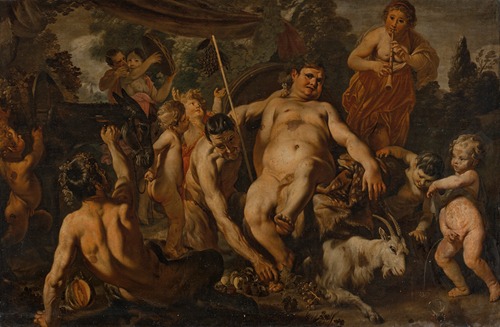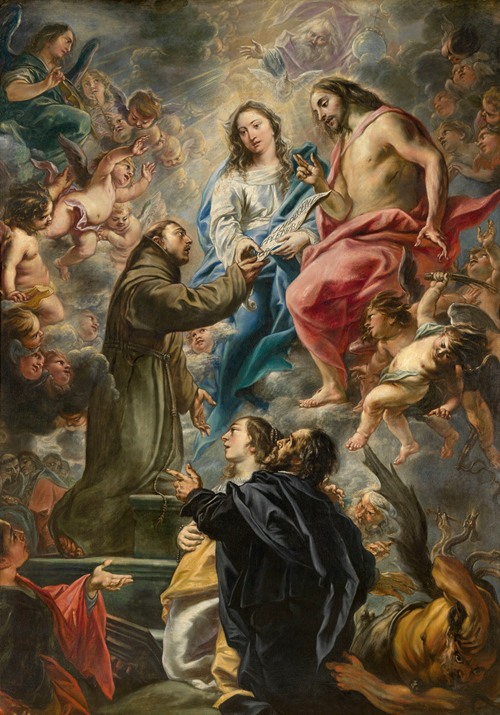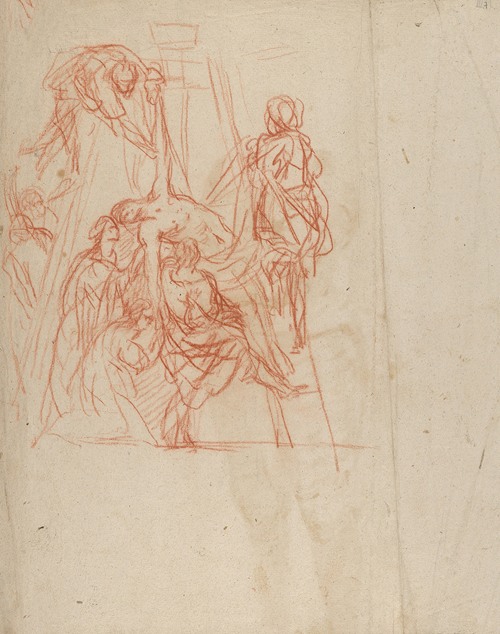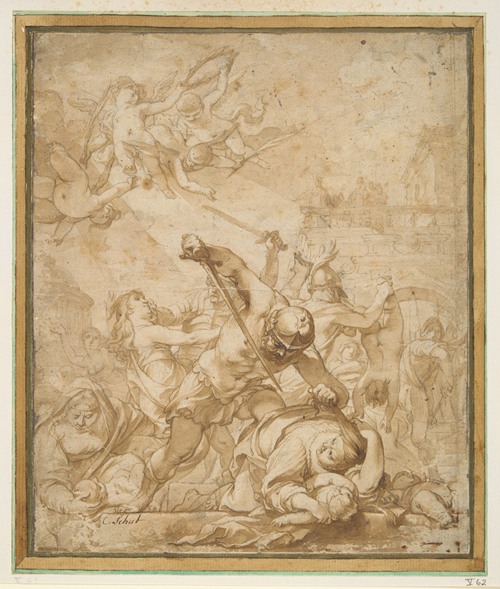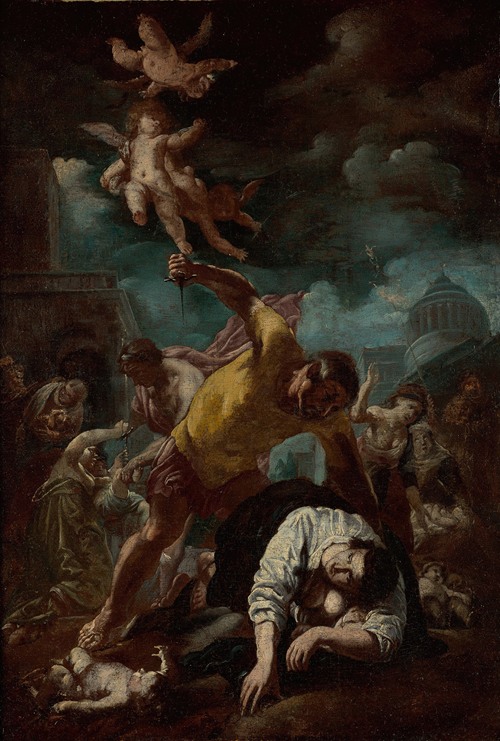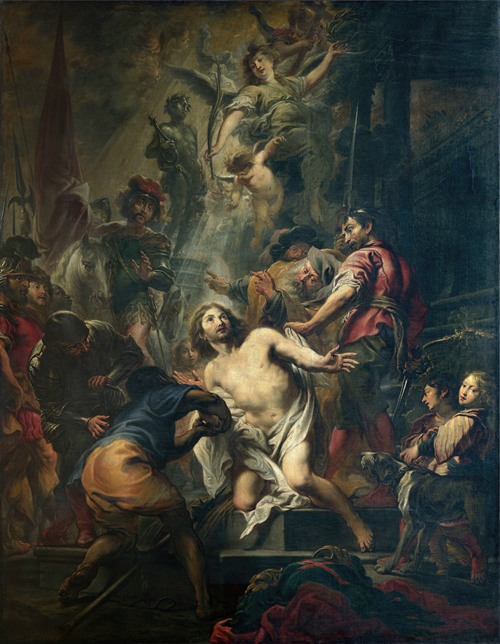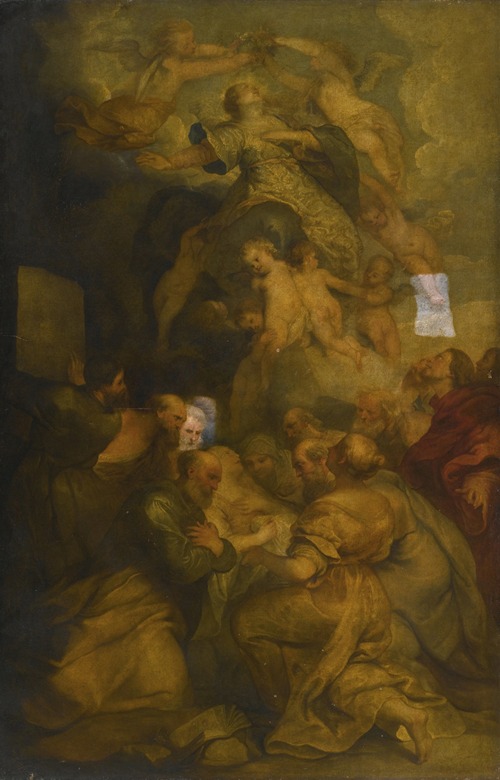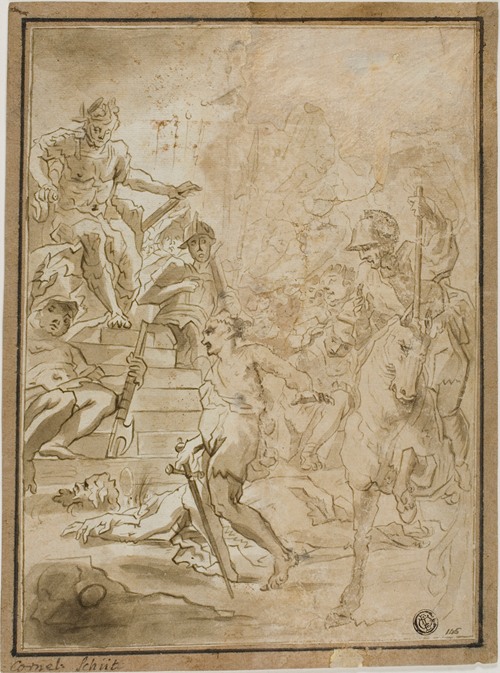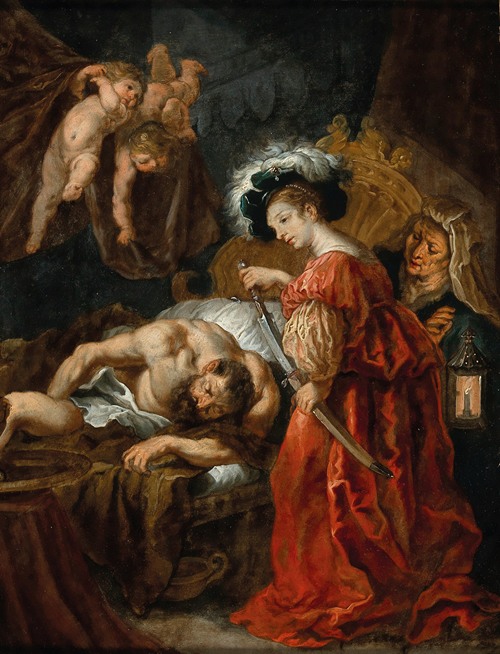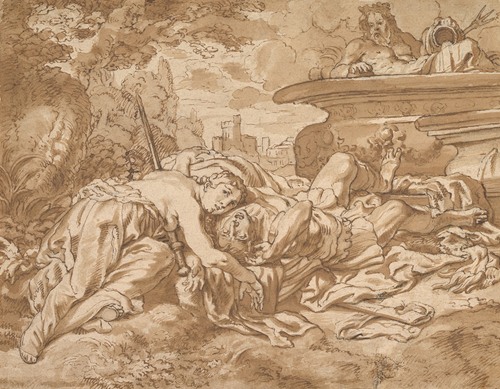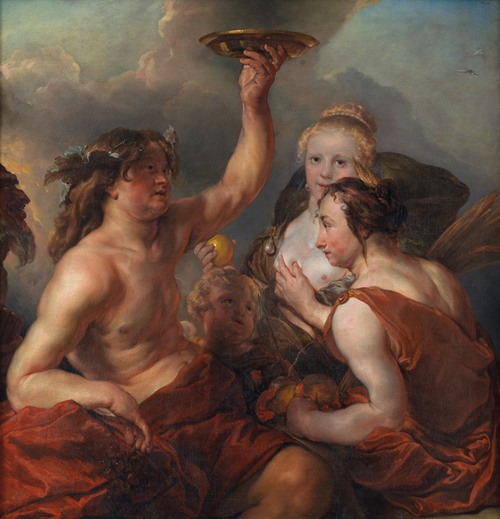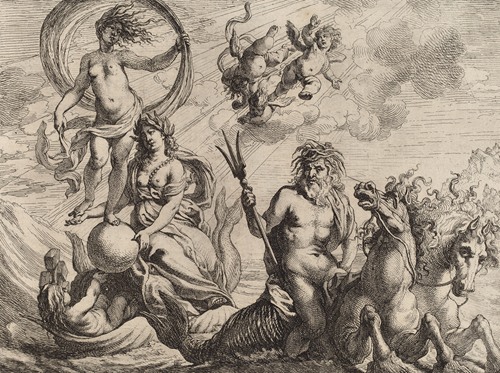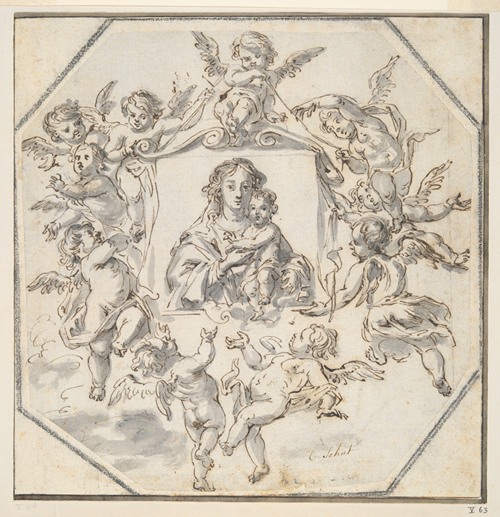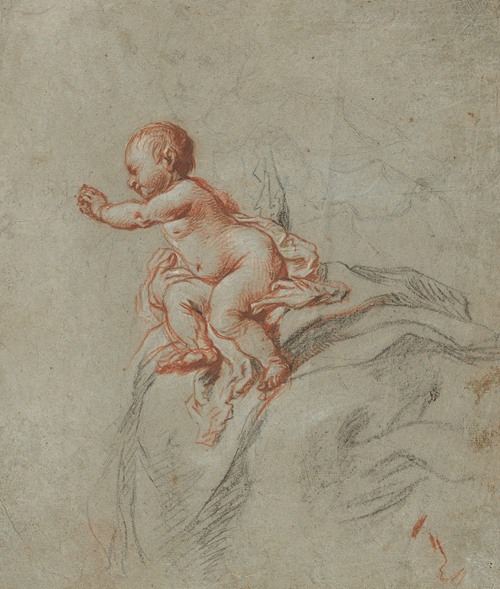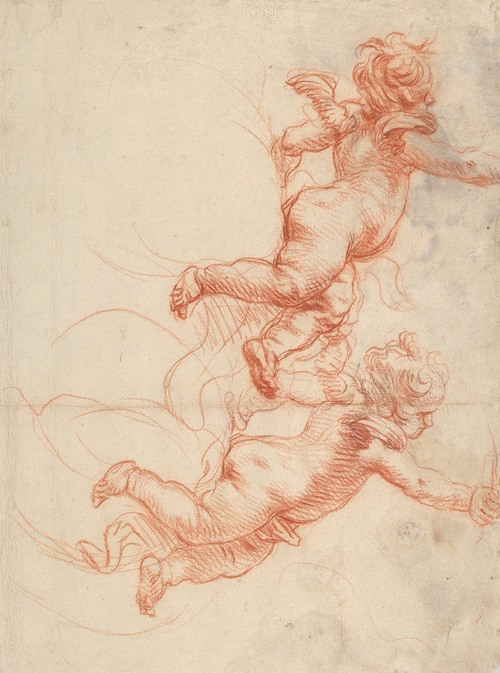
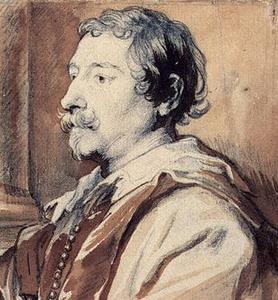
Cornelis Schut was a Flemish painter, draughtsman, engraver and tapestry designer who specialized in religious and mythological scenes. Presumed to have trained under Rubens, he treated Counter-Reformation subjects in a High-Baroque style. After a stay in Italy, he worked mainly in Antwerp where he was one of the leading history painters in the first half of the 17th century.
Cornelis Schut was born in Antwerp as the son of Willem Schut and Suzanna Schernilla. There are no records about his artistic training. He is first mentioned as a pupil of Peter Paul Rubens by the 18th century historian Jacob Campo Weyerman. Although the scientific relevance of Weyerman's sources is questioned, it is still assumed that Schut was a pupil of Rubens since Rubens was exempted from registering his pupils with the Antwerp Guild of St Luke. Because Schut's early works are closer to the style of the leading Antwerp history painter Abraham Janssens, some connection with the workshop of Abraham Janssens may have existed although it does not prove he was Janssens' pupil. Schut became a master of the Antwerp Guild of St Luke in 1618.
Schut left for Italy shortly after 1618. While in Rome, he was a founding member of the Bentvueghels, an association of mainly Dutch and Flemish artists working in Rome. It became customary for the Bentvueghels to adopt an appealing nickname, the so-called 'bent name'. Schut took the nickname Broodzak (bread bag).
From 13 January 1627 he worked on frescoes in the villa "Casino Pescatore" located in Frascati, owned by Giorgio Pescatori (aka Pieter de Vischere), a wealthy Italian banker and patron of Flemish descent. He collaborated on this project with the Dutch painter and also Bentvueghels member Tyman Arentsz. Cracht. This commission was instrumental in launching Schut's career in Italy as Pescatori was rich and influential and keen to help his compatriots in Italy. Another important patron in Rome was the aristocratic Italian banker and art collector Vincenzo Giustiniani who commissioned two large religious compositions from him (now in the Abbey of Sainte-Trinité, Caen). This patronage clearly demonstrated the esteem which Schut enjoyed in Rome. He also attracted the attention of the young Poussin then residing in Rome in the residence of the Flemish sculptor François Duquesnoy. Poussin's early works borrowed some motifs from Schut's works made for Vincenzo Giustiniani.
Schut's plans in Rome were disrupted when on 16 September 1627 he was imprisoned for the killing of a fellow artist by the name of Giusto. His jail time was short as on 2 October he was already released thanks to the intervention of the Accademia di San Luca, the association of artists in Rome. He then left Rome and was reported in 1627-28 in Florence. He is known to have designed tapestries for the Arazzeria Medicea, the most important tapestry factory in Italy founded in 1546 in Florence by the Medici grand duke Cosimo I.
His movements after this time are unclear. He resurfaced in September 1631 in Antwerp when he appeared before a notary to draw up marital conditions. On 7 October 1631 Cornelis Schut married Catharina Gheenssins, who was from a well-off family. His wife died on 29 September 1637 leaving the artist with three children of whom two died young. The artist remarried the next year with Anastasia Scelliers with whom he had two sons and two daughters.
Schut enjoyed artistic success upon his return to Antwerp where he produced mainly altarpieces for the local churches. He painted in the High-Baroque style that had become popular in Flanders by that time. In particular his ability to produce ceiling decorations in the monumental Italian style, with its typical illusionistic character, was regarded highly by patrons in his home country. An example of this is his Assumption of Mary in Antwerp Cathedral.
Schut played a prominent role in the decorative project at the occasion of the Royal Entry of the Cardinal-Infante Ferdinand in 1635 in both Antwerp (where Rubens was in charge of the overall artistic design) and Ghent. He collaborated with Gaspard de Crayer, Nicolas Roose, Jan Stadius and Theodoor Rombouts on these projects. The Ghent magistrate commissioned Schut to draw and engrave all the decorations that had been made for the Ghent Royal Entry. Schut supplied more than 100 etchings for this commission.
In 1643 the headmen of the Antwerp civil militia the Gilde of de Jonge Voetboog wrote out a competition for a new altarpiece for the militia's altar in the Antwerp Cathedral. Schut and Thomas Willeboirts Bosschaert were invited to submit for this competition a painting on the subject of the martyrdom of St George. Both works were exhibited and finally a panel of six judges, of which each artist had appointed three, ruled in favour of Schut.
Schut died in Antwerp on 29 April 1655 shortly after the death of his second wife. He was buried on 1 May 1655 in the Saint Willibrord Church in Antwerp in a grave shared with his second wife. The grave and its marble cenotaph are still present in the church.
Schut was the teacher of Ambrosius (II) Gast, Jan Baptist van den Kerckhoven, Philippe Vleughels, Hans Witdoeck and his cousin Cornelis Schut III.
